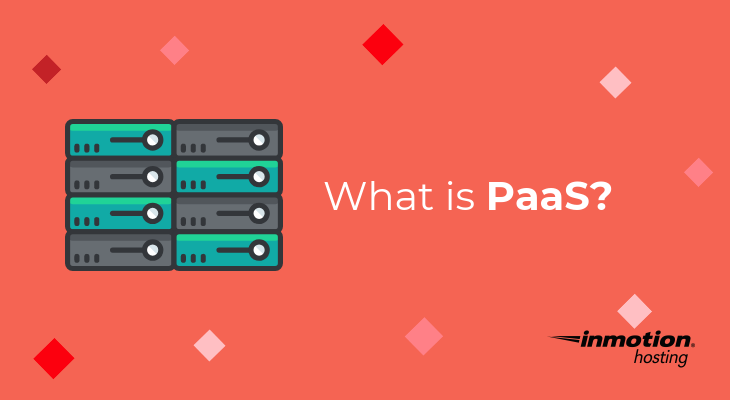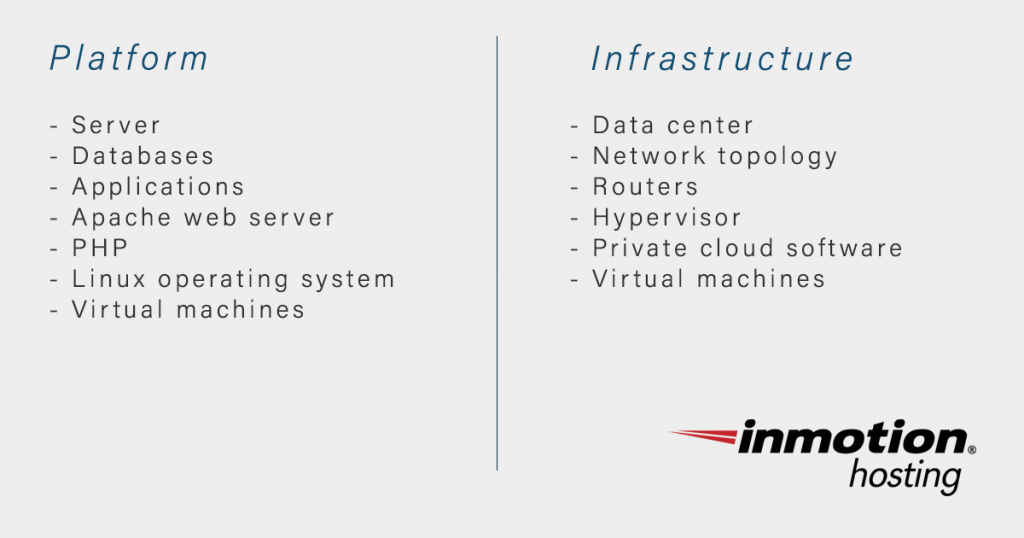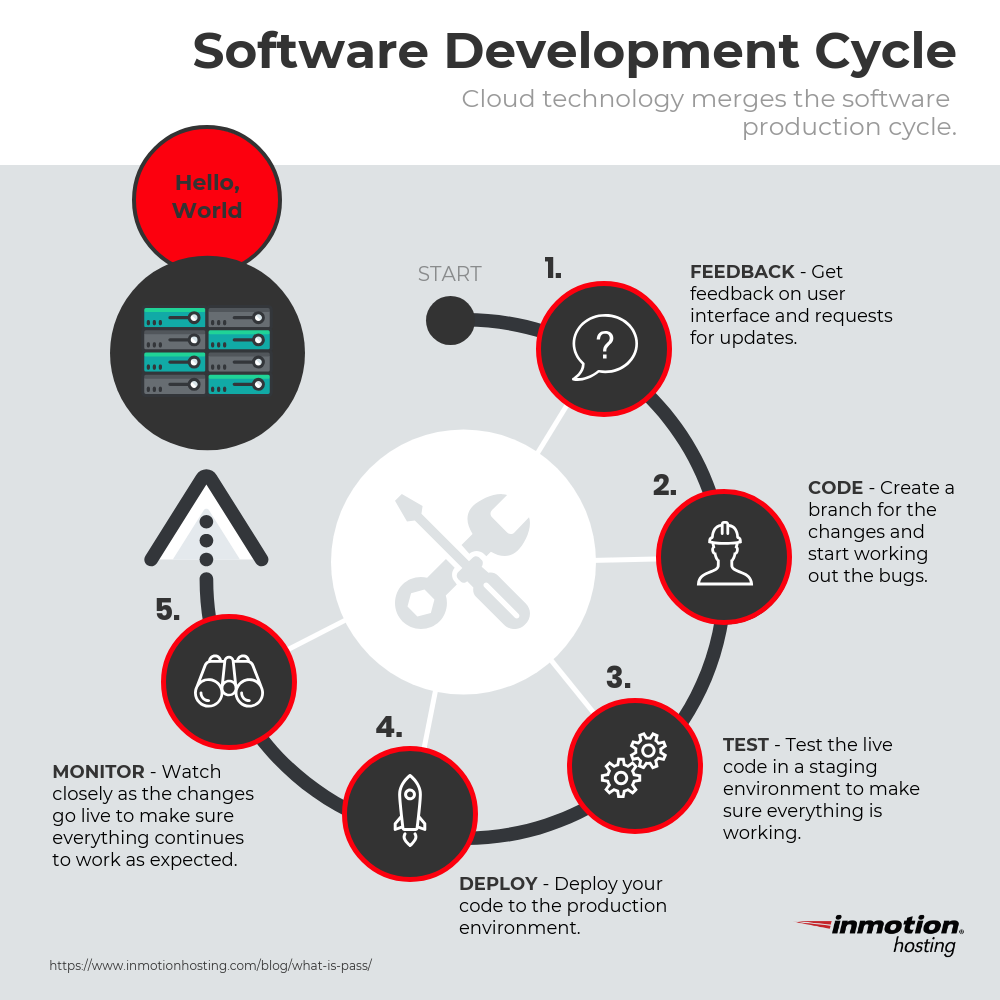
Platform as a Service, also known as PaaS, provides its users with a “pay-as-you-go” software interface for developing and deploying applications.
PaaS is most useful in automating repetitive or extraneous setup tasks (like installing and configuring software libraries) so developers can save time and resources. Distributing your development tools in this fashion can have a significant effect on your whole development team workflow.
What Is The Difference Between PaaS and IaaS?
The difference between PaaS and Infrastructure as a Service (or IaaS) comes down to two letters: P for platform, and I for infrastructure.
Platform, in this sense, is a software platform. For example, if you want to deploy a web application that requires certain software resources, a platform is all you need. The platform can give you a virtual machine, and you can install any software you need, or install a software bundle.
If physical networking resources (or, in some cases, virtual ones) are required, then infrastructure services come into the picture. There is some crossover in terminology, however. Virtual machine architecture could be considered software (platform) or hardware (infrastructure).
Depending on your needs, terminology can vary slightly. But the concepts remain the same.
Notice there is some overlap in terms:

Many PaaS providers include a robust application programming interface (API). This means you don’t need to code your own solutions for interfacing with the platform.
Providers like OpenMetal offer IaaS for businesses to run their deployments including up to building a PaaS to provide for their internal and external customers.
License Issues
In the past, open source projects ran into licensing issues with the use of software that developers believed to be free.
It can be difficult deciphering license terms written in difficult legal jargon. This is where PaaS can be a big help to small or large software projects.
Before offering certain software services in their platform, the provider has had their legal team go through all of the licenses in advance. This means you can use the software and only have to make sure you’re working with the terms of a single provider.
There have been a few high-profile cases in which an open source developer has issued legal claims against a large cloud provider. But these legal matters do not adversely affect end users in most cases.
It’s always best to check any fine print before making a large deal with a cloud provider.
What Is An Example of PaaS?
To better illustrate PaaS in action, it’s helpful to imagine a web application.
Let’s say the app requires various software libraries, configured precisely, in order to run optimally.
Now, in order to launch the app, you would contact a PaaS provider to obtain the software platform on which your app can run.
The primary benefit of PaaS, as opposed to a standard hosting account, is the “pay-as-you-go” model. Let’s say your app only has 100 users when you launch. This is fine for a start.
If your data indicates you will soon have 1,000 users, you can use PaaS to dynamically allocate more computing resources to accommodate your new users. This makes your platform “scalable” because it scales dynamically as your needs change and you will only pay for the amount of resources you used during that billing cycle.
The other benefit of PaaS is being able to replicate your software stack in “the cloud.” For example, if you’re developing your app in a local environment, with all the software libraries and dependencies needed, you can duplicate that environment on the platform to eliminate environmental variables that might cause problems or require extra debugging.
Dynamic Development and Deployment
One of the key strengths of PaaS is how it benefits a software production workflow. These days, software is rarely physically shipped to end users. Often it is downloaded or used through a web browser. This is part of the reason why cloud infrastructure has become so important to so many software companies.

In order to provide full support for the software “life cycle,” PaaS allows development teams the ability to host resources for both development and deployment. All the necessary moving parts are in place to create a dev environment, test changes, make updates, and push the changes live to the cloud.
In most situations, even networking and requisitioning new virtual resources can all be done on the fly. This helps development teams stay on target, avoid loss, and provide virtually limitless redundancy. In this case, redundancy is a good thing.
Public Cloud Platforms and Private Cloud Infrastructure
You often hear “platform as a service” or “infrastructure as a service” in the same conversation as “private cloud” and “public cloud.” So it would be good to have a solid understanding of how these terms are related and how they differ.
The Private and The Public
The use of private and public cloud products often meet different needs. “Public cloud” typically refers to software services like virtual machines and apps. “Private cloud” typically refers to a private infrastructure like a data center, physical servers and network utilities.
With the advent of new on demand hosted private clouds, the terminology is being challenged. When a private cloud is delivered in minutes, it now fills many of the public cloud requirements.
Use of Public Cloud Platform For Sensitive Data
If you are going to use a public cloud instance to host sensitive information it is your responsibility to make sure that your data collection and retention policies are compliant with applicable laws.
Your platform provider is not responsible for any loss of data or security breach beyond what is set forth in their terms of service.
In a situation with privacy concerns, private cloud – instead of public cloud – is often a better solution as this addresses numerous data sovereignty laws without having to search every terms of service the public cloud has put forth.
Before You Buy Into The Cloud
Here is a brief checklist of items to think about before investing in a cloud platform as a service:
- What are the data laws for your region or customer?
- Do you need Object Storage?
- What kind of application are you building?
- How big is your team?
- What are your unique needs?
- What is your particular software life cycle?
- What’s your budget?
- Can you accomplish your goals with a VPS or Dedicated Server?
- How much custom configuration do you need?
- What kind of operating system do you need?
- Linux?
- Ubuntu?
- Debian?
- Fedora?
- FreeBSD?
- Windows?
- Linux?
- Do you have a disaster recovery plan?
Having a clear roadmap for your project from beforehand will save you a lot of time and money and better inform your decisions along the way.
One thought on “What is Platform as a Service (PaaS)?”